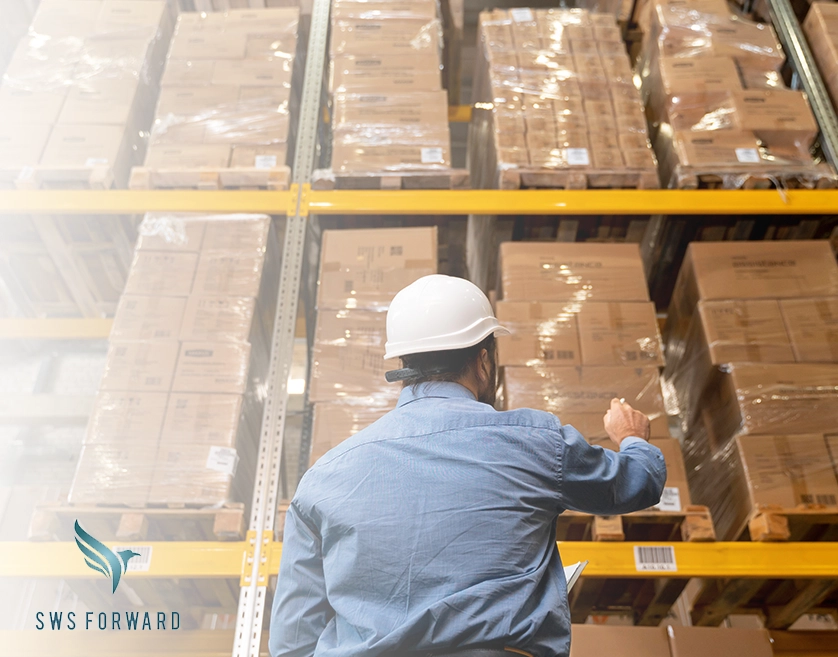All You Need To Know About Warehousing Logistics

Introduction to Warehousing Logistics
In an ever-evolving global market, the role of warehousing logistics has become increasingly crucial. At its core, warehousing logistics encompasses the storage, handling, and movement of goods within and from a warehouse. But this definition barely scratches the surface of its multifaceted role in modern commerce.
The Essence of Warehousing Logistics
Warehousing logistics is not just about storing products. It encompasses managing resources, optimizing space, and ensuring products move efficiently from point A to B. This dance is choreographed with precision, leveraging technology, strategy, and human resources to keep the supply chain robust and responsive. The efficacy of warehousing logistics directly impacts a business’s ability to meet customer demands, maintain inventory levels, and manage costs.
Historical Perspective
The history of warehousing dates back centuries, evolving from simple storage spaces to sophisticated hubs integral to supply chains. Initially, warehouses served as mere holding points for goods. However, with the advent of industrialization and the rise of consumer culture, their role transformed. Today, warehouses are not just storage units but critical nodes in the global supply chain, facilitating just-in-time delivery, e-commerce fulfillment, and a plethora of other modern logistics practices.
Modern Warehousing: A Hub of Activity
Today’s warehouses are bustling centers of activity, where goods are not only stored but also managed and processed. This includes tasks like packaging, labeling, and assembly, making warehouses much more than static storage sites. They are dynamic environments where goods are continuously on the move, and efficiency is paramount.
The Impact of Technology on Warehousing Logistics
Technology has revolutionized warehousing logistics. From sophisticated Warehouse Management Systems (WMS) to the use of drones and robotics for inventory management, technological advancements have made warehouses smarter and more efficient. These technologies help in tracking inventory in real-time, optimizing routes within the warehouse for picking and packing, and even predicting stock levels to avoid over or under-stocking.
The Human Element
Despite the technological advancements, the human element remains integral to warehousing logistics. Skilled professionals are needed to manage operations, make strategic decisions, and handle the technology that powers modern warehouses. The interplay between human expertise and technological tools is what makes warehousing logistics truly effective.
Why Warehousing Logistics Matters More Than Ever
In our rapidly changing world, where consumer expectations are higher, and the need for speed and accuracy is paramount, warehousing logistics stands as a critical component of business success. It’s not just about storing goods; it’s about strategically managing assets to provide value to customers and maintain a competitive edge. Warehousing logistics is the backbone of supply chains, ensuring that products are available where and when they are needed, in the most efficient way possible.
Core Components of Warehousing Logistics
Delving deeper into the realm of warehousing logistics, we uncover its core components. These elements are the building blocks that form the foundation of efficient and effective warehouse operations.
Warehouse Design and Layout
The design and layout of a warehouse are more than just arranging shelves and storage spaces. It’s a strategic decision that impacts every aspect of warehousing operations. An optimal layout ensures smooth flow of goods, minimizes handling, and maximizes space utilization. Factors like the nature of goods stored, frequency of access, and the type of picking methods used dictate the warehouse layout. For instance, a warehouse storing perishable goods would have a different layout compared to one storing electronics. The key is to design a layout that reduces operational costs and time while ensuring safety and easy access to goods.
Inventory Management Techniques
Effective inventory management is the cornerstone of warehousing logistics. It involves the right balance between meeting customer demands and minimizing the costs of holding inventory.
- Just-In-Time (JIT) Inventory: This technique involves receiving goods only as they are needed in the production process, reducing inventory costs. This method requires precise coordination and a reliable supply chain, as delays can halt the entire production process.
- ABC Analysis: Another crucial technique is ABC analysis, a method of categorizing inventory based on its importance. ‘A’ items are high-value with low frequency of use, ‘B’ items are moderate in value and use, and ‘C’ items are low in value but high in frequency. This categorization helps in focusing resources and efforts on the most impactful items.
Warehousing Technology and Automation
The integration of technology has been a game-changer in warehousing logistics.
- Warehouse Management Systems (WMS): WMS are software applications that offer powerful tools to manage warehouse operations. They provide real-time data on inventory levels, manage orders and shipments, and optimize picking and packing processes. WMS can dramatically improve operational efficiency and accuracy, making them indispensable in modern warehousing.
- Automated Storage and Retrieval Systems (AS/RS): These systems automate the storage and retrieval of goods in a warehouse. AS/RS can range from simple conveyor belts to high-end robotic systems that can navigate the warehouse independently. They not only speed up the process but also reduce labor costs and improve safety.
Operational Aspects of Warehousing Logistics
Moving beyond the foundational elements, we delve into the operational aspects of warehousing. These are the day-to-day practices and strategies that ensure the smooth functioning of a warehouse, guaranteeing efficiency and safety.
Safety Standards and Compliance
In warehousing, safety is not an afterthought – it’s a prerequisite. Adhering to safety standards and regulatory compliance is crucial for protecting employees, preserving goods, and avoiding legal complications. This involves implementing safety protocols, regular training for staff, and ensuring that equipment and facilities meet industry standards. It’s also about creating a safety-first culture, where employees are encouraged to be vigilant and proactive in identifying potential hazards.
Cost Management in Warehousing Logistics
Controlling costs is a critical aspect of warehousing logistics. This involves more than just cutting expenses – it’s about optimizing operations to achieve better financial efficiency.
- Reducing Operational Costs: This can be achieved through various strategies such as optimizing energy usage, automating manual processes, and implementing lean inventory techniques. Regularly reviewing and adjusting operational procedures can lead to significant cost savings over time.
- Strategies for Maximizing Space Utilization: Efficient use of space is key to managing costs in warehousing. This includes implementing smart storage solutions, optimizing layout based on product flow, and using vertical space effectively. The goal is to store as much inventory as possible in the least amount of space without compromising accessibility or efficiency.
Get in Touch with SWS Forward
If you’re seeking expertise and innovation in warehousing logistics, SWS Forward is your go-to partner. We understand the complexities and challenges of modern warehousing operations and are dedicated to providing solutions that are not only effective but also tailored to your unique needs.
Why Choose SWS Forward?
At SWS Forward, we pride ourselves on being more than just a service provider – we’re your strategic partner in warehousing logistics. We offer:
- Customized Solutions: Every business is unique, and so are your warehousing needs. We provide customized solutions tailored to your specific requirements.
- State-of-the-Art Technology: Leveraging the latest in warehousing technology, we ensure your logistics are as efficient and cost-effective as possible.
- Expert Team: Our team comprises industry experts with years of experience in warehousing logistics. We bring knowledge, expertise, and a commitment to excellence to every project.
- Comprehensive Support: From planning and implementation to ongoing management, we offer full support to ensure your warehousing operations run smoothly.
Your warehousing logistics challenges are unique, and so are our solutions. Contact SWS Forward today, and let’s drive your warehousing logistics forward together.



